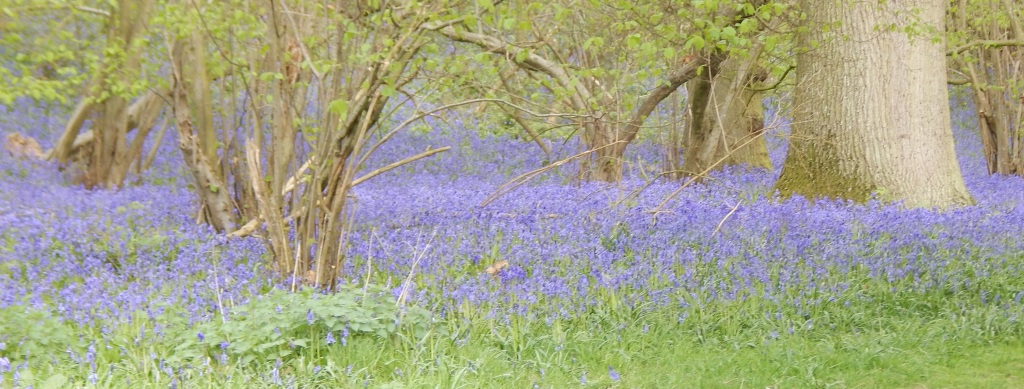
[178] Hyacinthoides non-scripta, Bluebell
Introduction
Hyacinthoides non-scripta, the Bluebell, is a very common and widespread spring flowering bulb plant associated with ancient woodlands. It may be called the Common Bluebell, English Bluebell, British Bluebell, Wild Hyacinth or other common names.
All the species of Hyacinthoides are called Bluebells. So are several unrelated plants that look superficially similar.
Campanula rotundifolia, the Harebell, may be called the Scottish Bluebell and, in Scotland is sometimes just referred to as a Bluebell.
Taxonomy
Kingdom – Plants
Division – Vascular Plants
Class – Angiosperms (Flowering Plants)
Clade – Monocots
Order – Asparagales
Family – Asparagaceae
Subfamily – Scilloideae
Tribe – Hyacinthae
Genus – Hyacynthoides
Scientific Name – Hyacynthoides non-scripta
It was originally Scilla non-scripta and has been Hyacinthus non-scriptus and Endymion non-scriptus before becoming a species of Hyacinthoides. See Names for a note about the Latin endings.
Name
Hyacinthoides obviously comes from [179] the Hyacinth, which we will meet tomorrow. Non-scripta means unlettered or unmarked and is a reference to Greek mythology. The classical hyacinth of mythology (almost certainly not the modern hyacinth) sprang from the blood of the dying prince Hyacinthus. As a sign of his grief, the god Apollo shed tears that marked the flower’s petals with letters spelling ALAS.
Scilloideae
As for most plants now, the taxonomy of Scilloideae (sometimes treated as a family Hyacinthaceae) is fluid and under discussion. It does include the clearly related species Hyacinthus (Hyacinth,) Muscari (Grape Hyacinth) and Hyacynthoides (Bluebell.) All species are bulbous monocots.
Bluebells
By now, I am sure you will expect me to start by pointing out that the Bluebell is a typical monocot. Well, it is a typical monocot and you know what that means. It starts with a circle of long, thin leaves that we don’t really notice. Then the single flower stalk grows vertically in the centre. The stalk bears up to about a dozen flowers that generally cause the stem to droop at the end.
Flowers are a vivid blue and are shaped like a bell. That should not have come as a surprise!

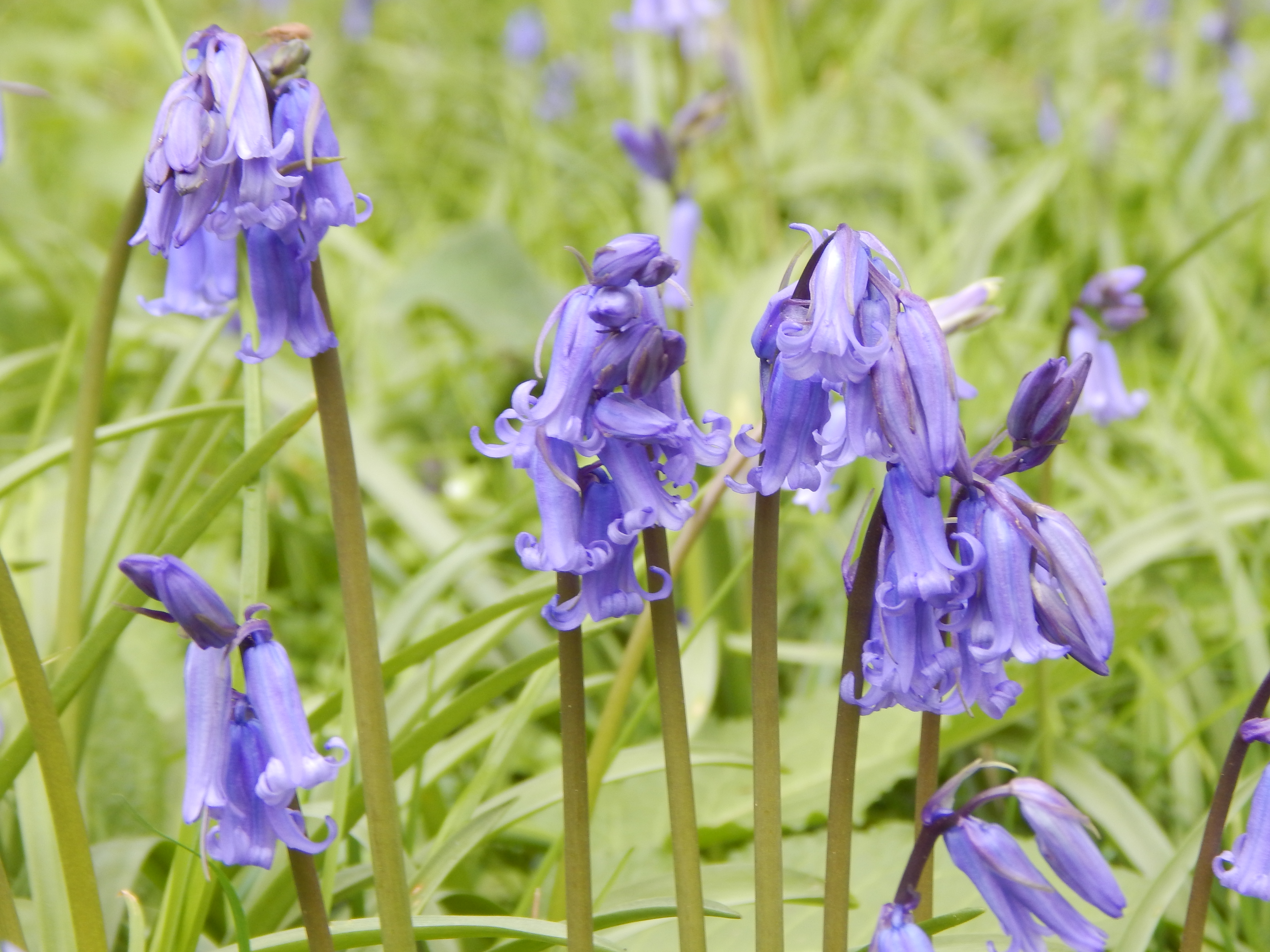

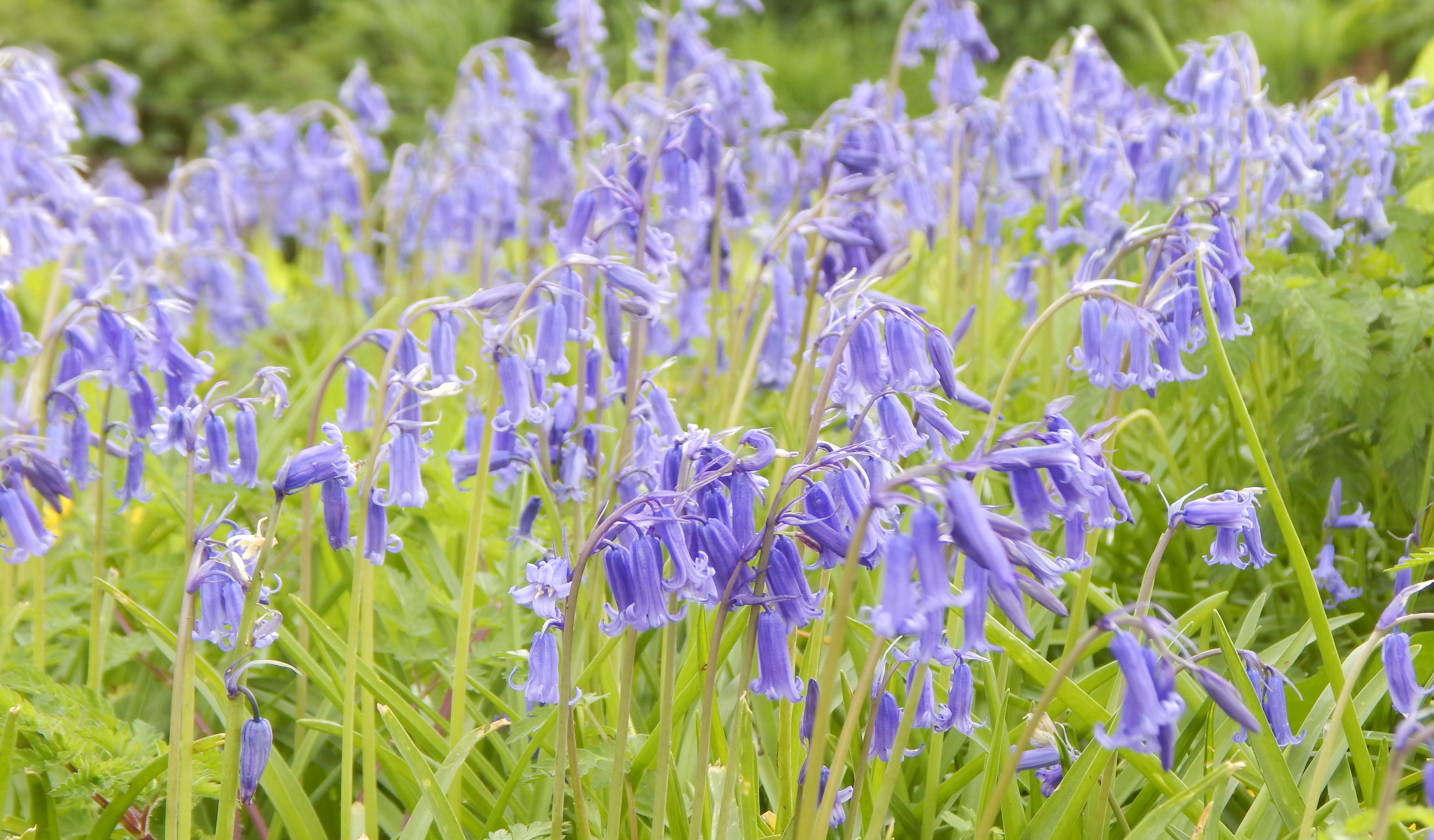
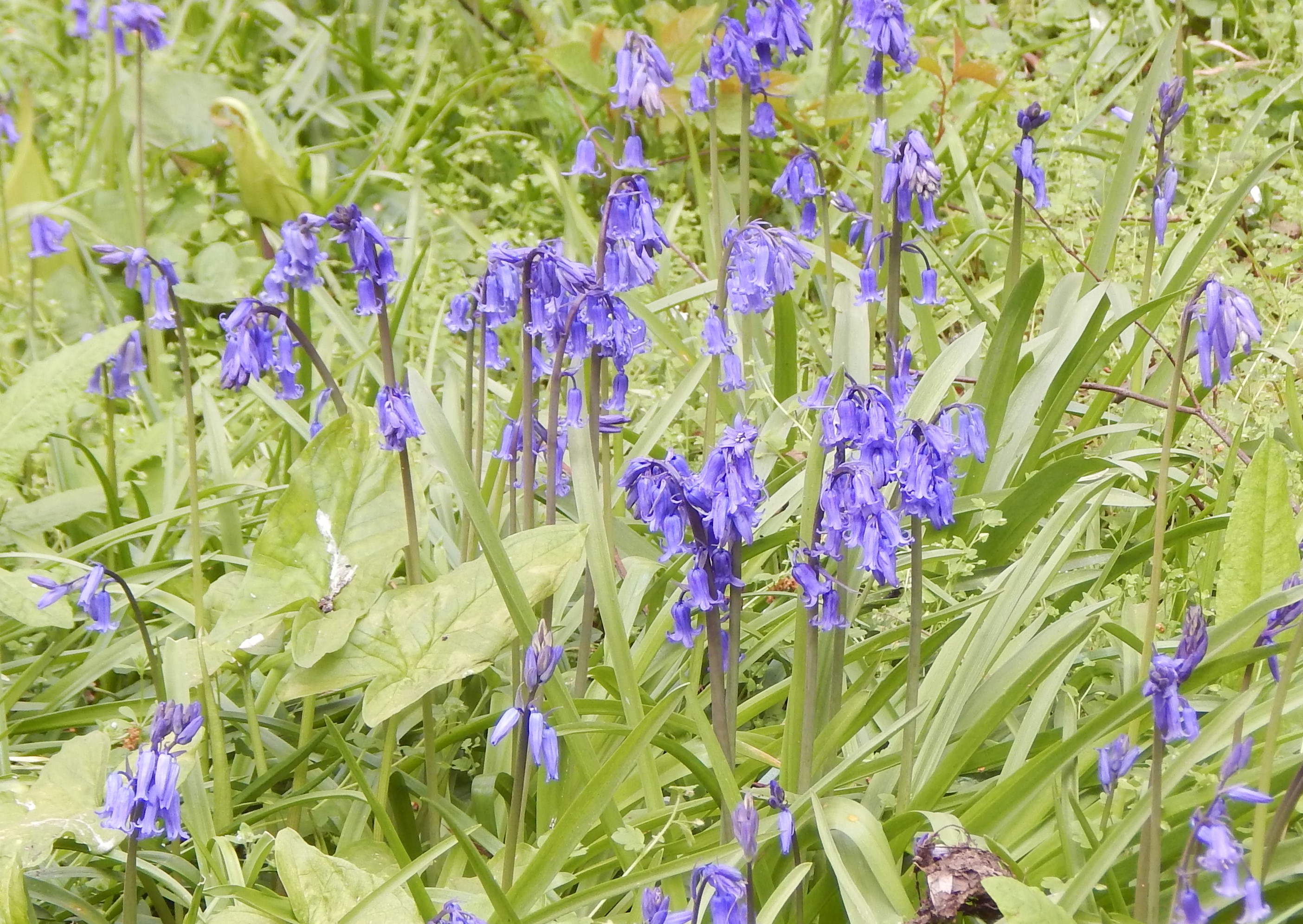
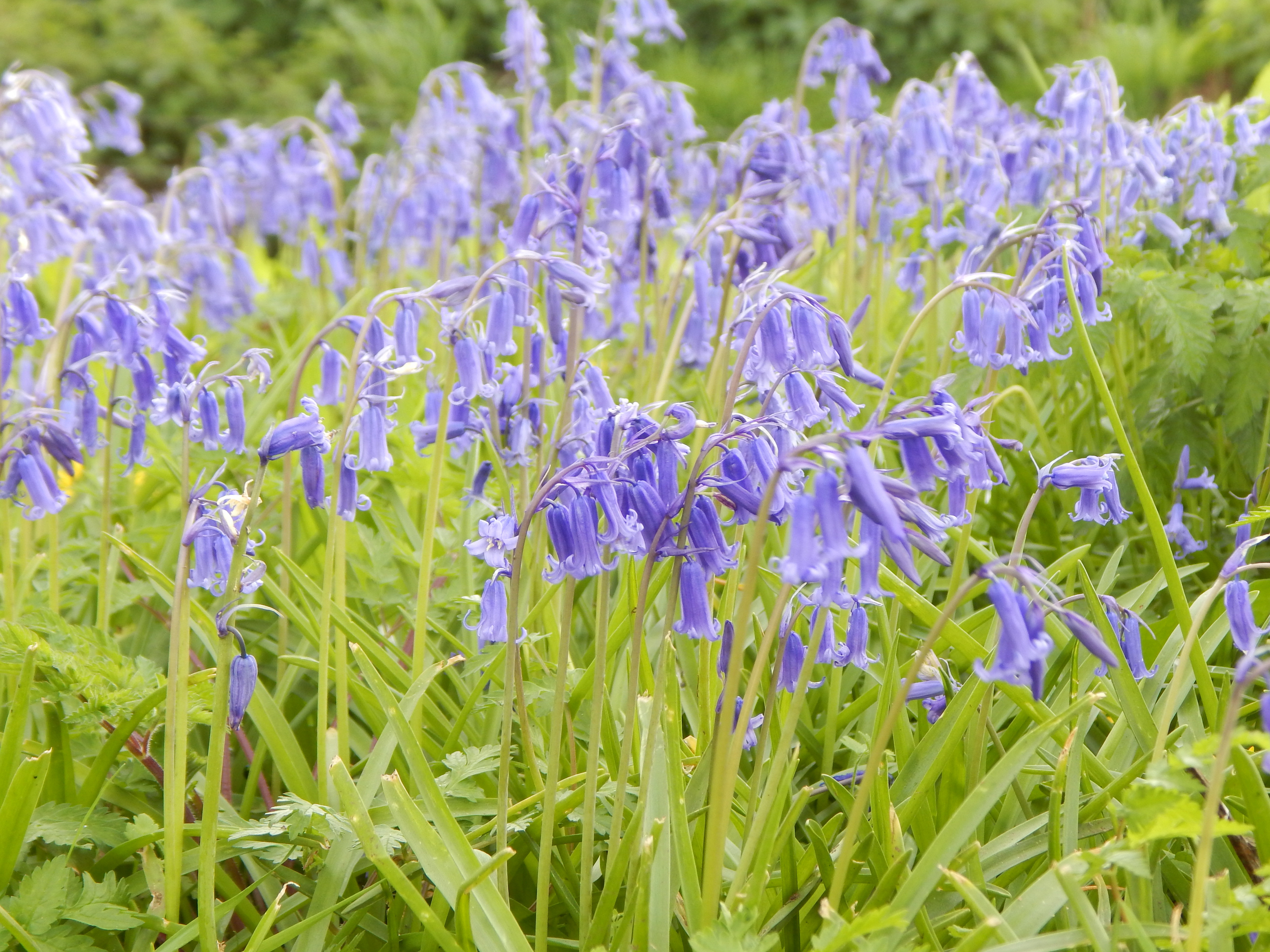

Occasionally, the flowers are violet or white.

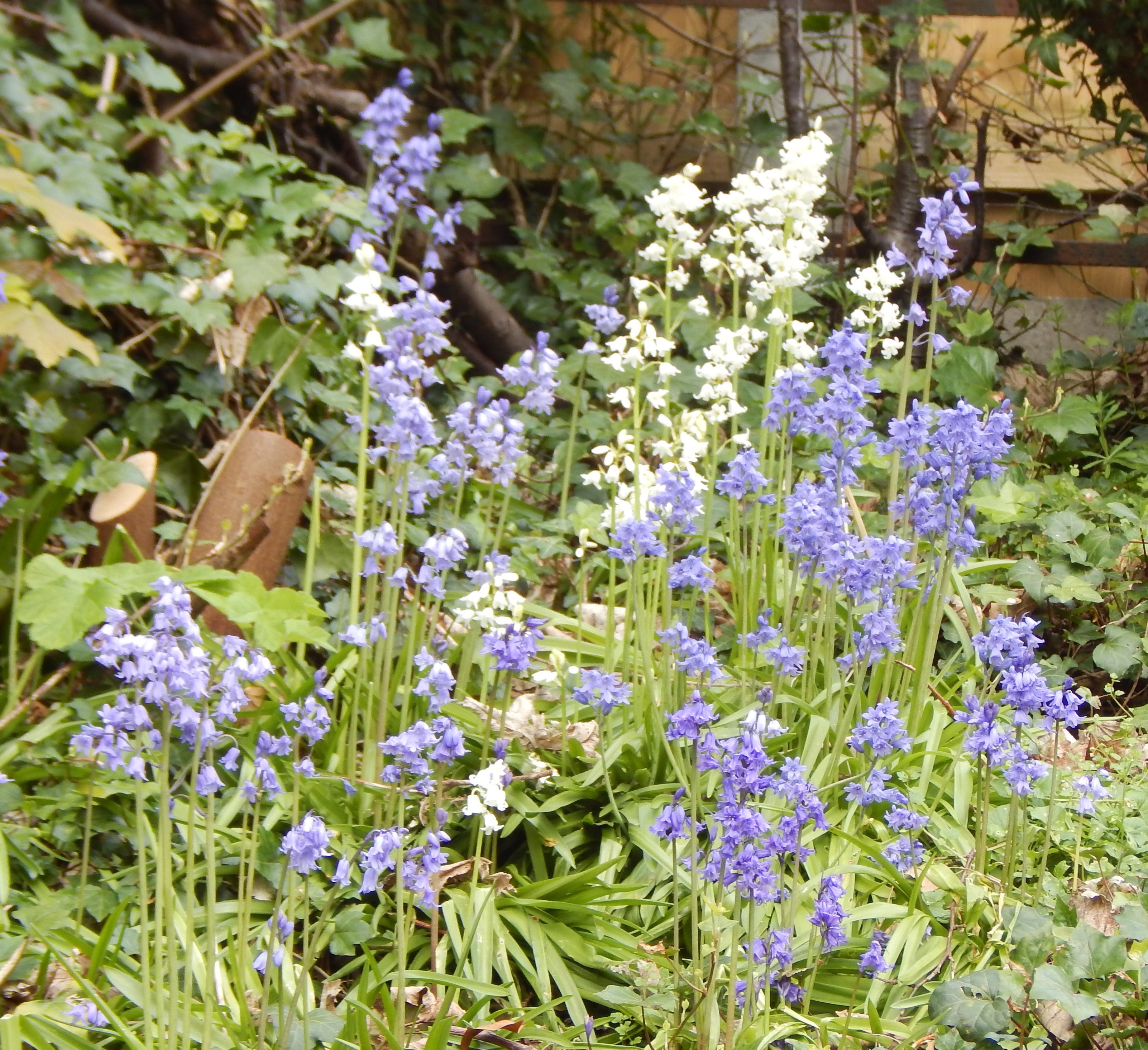
Habitat and use
The Bluebell is native to parts of Europe, particularly to all of the UK. It is associated almost exclusively with ancient woodlands but is still found in some areas that were ancient woodlands a few hundred years ago. They produce their flowers before the woodland canopy grows overhead.
Hyacynthoides non-scripta and the non-native Hyacynthoides hispanica, the Spanish Bluebell are both widely cultivated. In places the Spanish variety has been allowed to naturalise and a hybrid of the two species is also found.
Other Notes
This species produces bulbs and can spread vegetatively. In Bluebell woods it can dominate the area when in flower.
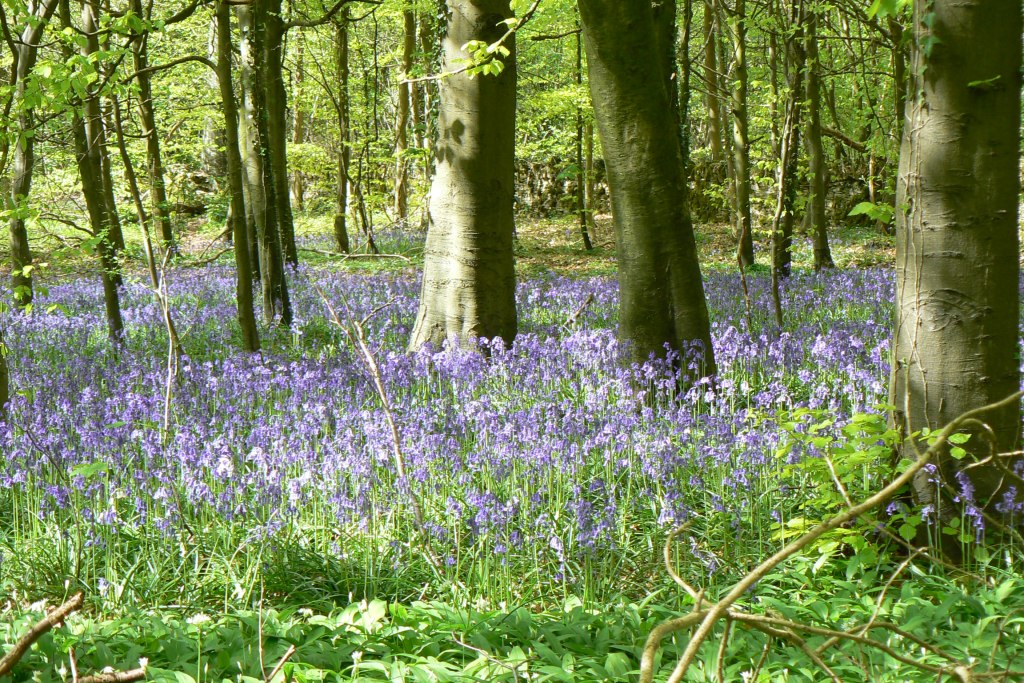
See also
You can compare this plant with [104] Crocus, [154] Snowdrop, [234] Daffodil, [016] Wild Garlic, and of course the Hyacinth, coming tomorrow.
Campanula rotundiflora, the Harebell or Scottish Bluebell, is not related. It is neither bulbous nor a monocot, buts flowers are similar. It does occur in Britain but is much less common than the Bluebell. It is probably more common in Scotland.
